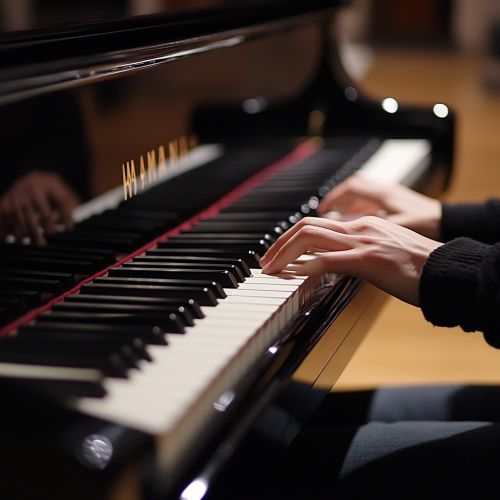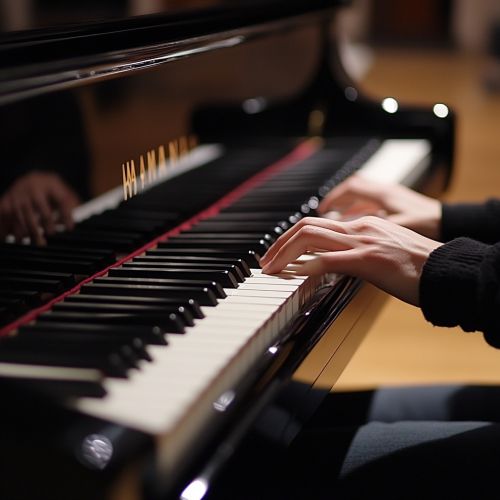Major sixth
Major Sixth
The major sixth is a musical interval that spans six diatonic scale degrees. It is one of the most commonly used intervals in Western music, known for its consonant and harmonious sound. This article delves into the theoretical aspects, historical context, and practical applications of the major sixth.


Theoretical Aspects
Definition and Notation
A major sixth is an interval that encompasses six letter names and nine semitones. In the context of the C major scale, the interval from C to A is a major sixth. The major sixth can be notated in various ways depending on the musical context, but it is most commonly written as "M6" or simply "6."
Frequency Ratio
The frequency ratio of a major sixth is 5:3. This means that if the lower note of the interval has a frequency of 300 Hz, the upper note will have a frequency of 500 Hz. This ratio contributes to the interval's consonant quality, making it pleasing to the ear.
Just Intonation vs. Equal Temperament
In just intonation, the major sixth is tuned to the exact 5:3 ratio. However, in equal temperament, which is the tuning system most commonly used in Western music today, the major sixth is slightly adjusted to fit the twelve-tone equal division of the octave. This results in a frequency ratio of approximately 1.68179:1, which is very close to the just intonation ratio but not identical.
Historical Context
Ancient and Medieval Music
The major sixth has been recognized as a consonant interval since ancient times. In medieval music theory, it was classified as a "perfect" interval, along with the unison, octave, perfect fourth, and perfect fifth. This classification was based on the interval's stability and consonance.
Renaissance and Baroque Periods
During the Renaissance and Baroque periods, the major sixth was frequently used in polyphonic music. Composers like Bach and Monteverdi employed the major sixth in their harmonic progressions and melodic lines. The interval was often used to resolve dissonances and create a sense of tension and release.
Classical and Romantic Eras
In the Classical and Romantic eras, the major sixth continued to be a staple in Western music. Composers such as Beethoven and Schubert used the interval extensively in their compositions. The major sixth was often used to create lyrical and expressive melodies, as well as to enrich harmonic textures.
Practical Applications
Harmonic Function
In harmonic contexts, the major sixth often appears as part of a chord. For example, in a C major chord (C-E-G), adding an A creates a C6 chord. This chord is commonly used in jazz, pop, and other contemporary music genres to add color and complexity to harmonic progressions.
Melodic Use
Melodically, the major sixth is used to create wide, expressive leaps. It is often found in vocal music, where it can highlight emotional peaks and create a sense of longing or resolution. Famous examples include the opening leap in the song "My Bonnie Lies Over the Ocean" and the interval between the first two notes of the "NBC chimes."
Voice Leading
In voice leading, the major sixth is used to smooth transitions between chords. For example, in a progression from a C major chord to an A minor chord, the note E can move up a major sixth to C, creating a smooth and consonant resolution.
